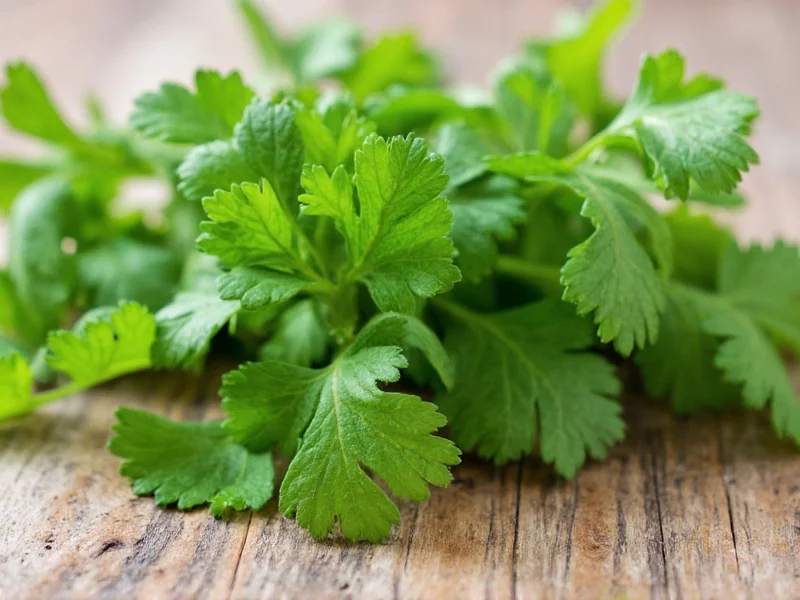The naming confusion around another word for cilantro stems from regional language differences rather than botanical distinctions. Both terms refer to the fresh leaves of the Coriandrum sativum plant, a member of the parsley family native to regions spanning from southern Europe to North Africa and western Asia.
Understanding the Cilantro Terminology Divide
When exploring what is cilantro called in the UK or other English-speaking countries, you'll discover a clear transatlantic divide:
| Region | Term for Fresh Leaves | Term for Dried Seeds |
|---|---|---|
| United States, Canada | Cilantro | Coriander |
| United Kingdom, Australia, India | Coriander | Coriander seeds |
| Spain, Latin America | Cilantro | Coriandro |
This difference between cilantro and coriander explanation reveals why recipe confusion occurs. When a British cookbook calls for “coriander,” it means the fresh leaves, while an American recipe using the same term likely refers to ground seeds.
Botanical Background: One Plant, Multiple Names
The Coriandrum sativum plant produces several culinary components with distinct names:
- Cilantro/Coriander leaves: The lacy green foliage with a distinctive citrusy, sometimes polarizing flavor
- Coriander seeds: The round, beige seeds with warm, nutty, slightly citrus notes
- Coriander root: Used extensively in Thai cuisine for its intense flavor
- Coriander stems: Often used in cooking for added flavor
Understanding why cilantro is called coriander outside the US requires examining linguistic history. “Cilantro” comes from the Spanish word for the plant, while “coriander” traces back to the Greek “koriannon,” which evolved through Latin and French before entering English.
Practical Implications for Cooks
When navigating recipes that use these terms, consider these practical tips:
- Check the recipe's country of origin to anticipate which terminology it uses
- Look for contextual clues – if the recipe mentions “seeds,” it's likely using American terminology
- When substituting, remember that dried coriander leaves don't adequately replace fresh cilantro
- Understand that cilantro vs coriander leaf is actually the same ingredient
Flavor Profile and Culinary Uses
Cilantro (or coriander leaf) has a bright, citrusy flavor with herbal notes that varies significantly among consumers due to a genetic predisposition. Approximately 21% of people possess a gene that causes cilantro to taste like soap to them.
This fresh herb is essential in many global cuisines:
- Mexican: Salsas, guacamole, and as a garnish for tacos
- Indian: Chutneys, raitas, and curry garnishes
- Thai: Curries, salads, and noodle dishes
- Middle Eastern: Tabbouleh, salads, and meat dishes
Navigating Recipe Confusion
When encountering regional names for cilantro in recipes, consider these strategies:
- Examine the recipe's origin – British recipes use “coriander” for the fresh herb
- Check for additional descriptors like “fresh,” “leaves,” or “seeds”
- Consider the dish type – Mexican recipes will likely mean cilantro when they say “coriander”
- When in doubt, look for preparation methods – fresh herbs are typically added at the end
For those searching for a substitute for cilantro in recipes, consider parsley with a squeeze of lime, culantro (a different but similar-tasting herb), or a small amount of fresh basil depending on the dish.
Storage and Selection Tips
Whether you call it cilantro or coriander leaf, proper storage maximizes freshness:
- Store with stems in water like flowers, covered with a plastic bag in the refrigerator
- Use within 3-5 days for optimal flavor (the flavor deteriorates quickly)
- Freeze chopped leaves in ice cube trays with water or oil for longer storage
- Look for vibrant green leaves without yellowing or wilting
Common Questions About Cilantro Terminology
Is cilantro the same as coriander?
Yes, cilantro and coriander leaf refer to the same plant part – the fresh leaves of Coriandrum sativum. The difference is purely regional terminology: Americans call the fresh leaves “cilantro” and the seeds “coriander,” while most other English-speaking countries use “coriander” for the fresh leaves.
Why do Americans call it cilantro instead of coriander?
Americans adopted “cilantro” from Spanish due to Mexican culinary influence, while retaining “coriander” for the seeds. This distinction developed as Mexican cuisine became popular in the United States, creating a need to differentiate between the fresh leaves and dried seeds in recipes.
Can I substitute dried coriander for fresh cilantro?
No, dried coriander (the seeds) cannot substitute for fresh cilantro/coriander leaves. They have completely different flavor profiles – the seeds are warm, nutty, and citrusy while the fresh leaves are bright, citrusy, and herbal. For fresh cilantro substitution, try parsley with lime juice or culantro if available.
What does cilantro taste like to people who think it tastes like soap?
Approximately 21% of people have a genetic variation that makes cilantro taste soapy or metallic. This is due to certain olfactory-receptor genes that cause aldehydes in cilantro (which most people perceive as citrusy) to register as soap-like chemicals. The phenomenon is scientifically documented and not simply a matter of preference.
Is there a difference between cilantro and Chinese parsley?
No, Chinese parsley is simply another name for cilantro/coriander leaves. The term reflects the herb's extensive use in Asian cuisines, particularly in Chinese, Thai, and Vietnamese cooking. All three terms – cilantro, coriander leaf, and Chinese parsley – refer to the exact same plant part.











 浙公网安备
33010002000092号
浙公网安备
33010002000092号 浙B2-20120091-4
浙B2-20120091-4